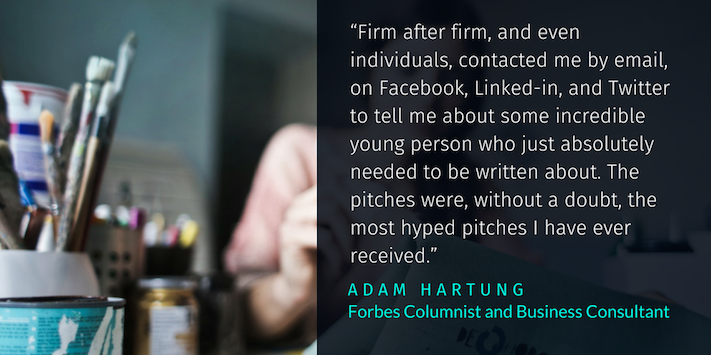Entrepreneurship has always been the soul of the American economy. A recent survey revealed that 21 million people in the U.S. already have a side hustle, another 7.5 million plan to start a new one in 2018, and one in two millennials moonlight.
It’s been said millennials are the most entrepreneurial generation yet. But the Wall Street Journal declared not so long ago that millennial entrepreneurs are actually a statistically “endangered species,” citing only 3.6 percent of people under 30 own a stake in their own business.
To understand where the truth may lie and how the myth began, it’s important to know what’s driving millennials into entrepreneurship, what’s keeping them there, what’s failing them, and what the future may hold.
Debt vs. dreams: Expectations and reality of the gig economy
In 2017, the student loan debt in the U.S. registered at $1.4 trillion. That’s more than the GDP of Australia, New Zealand and Ireland combined. The class of 2016 walked away at least $37,000 in the hole, and that’s considered a conservative figure.
So while millennials may admire the startup culture and yearn for self-employment, it’s understandable why most are wary of getting into more debt, save for lesser risk or risk-free endeavors such as Etsy, Uber or Elance. Catherine Baab-Muguira writes for the Motley Fool and summarizes, “Millennials are obsessed with side hustles because it’s all we’ve got.”
But hope is not lost. If you’re already in the gig economy but can’t quite make it your main hustle, here are five possible roadblocks standing in your way.
1. The exception versus the norm
Norm Brodsky is a veteran entrepreneur who has founded and expanded six businesses. Lately, he’s been noticing a worrisome attitude toward business among young entrepreneurs. It’s the belief that with a cool idea, enough hype and lots of investors, one can automatically launch a business. Profit can wait, right?
Turns out the answer is a big, fat “no.” While this has worked for a select few, Brodsky cautions that it’s definitely more the exception than the norm, and definitely not how business is built or sustained. Without revenue, the business can never be viable or at a point where it can sustain itself on internally cash flow.
Related: 15 Quotes That Will Motivate You to Start a Side Hustle
2. Innovation versus monetization
Dave Meltzer, author and humanitarian, shares Brodsky’s observation. He sees millennials are purposeful and passionate, and commends how they want to change the world for the better in all they do. But that’s not enough to succeed in business. To him, many millennial entrepreneurs are failing because they don’t understand or realize the difference between innovation and entrepreneurship.
Meltzer defines innovation as the action or process of taking imagination and making it real, while entrepreneurship is the act of monetizing that innovation.
Great entrepreneurs succeed because they can monetize their idea or anyone else’s. Innovators make something better without necessarily generating more revenue.
3. Self-promoter versus business promoter
Within a month of Adam Hartung writing “10 Great Lessons From Millennial Entrepreneurs,” an article that
highlights how millennial businesses are succeeding, he was bombarded with requests to feature a millennial side hustle or business. But there was little substance to be found.
While it’s true that influence is the new currency in the age of digital business, it’s actually a carefully crafted effort. Millennial entrepreneurs can become self-promoters, making themselves both the business and the brand. It’s never just about being confident with nothing to show for it, or the glamorous shots on social media.
4. Capital versus too much capital
Money is a blessing and a curse. If your side hustle is ready to transform and needs funding, it may seem like a no-brainer to say yes to any willing investor. More funds give way to more opportunities and growth, no?
Young entrepreneurs will do well to remember that investors invest because they’re expecting returns, and the ROI clock starts ticking the moment the money starts flowing. And whether you raise $1 or $10 million, you’ll probably spend it all within the same time frames anyway — then you’ll have to ask for more.
5. You versus the world
The side hustle can be a long and lonely road. It often means wearing 10 different hats and believing you have to do everything yourself. Keep in mind that this is a sure recipe for burnout. Millennials have the best of both worlds when it comes to business, as there are mentors from the pre-technology era and successful peers who are more than willing to share their knowledge and experience.
Here are a few mentor-matching organizations to get started:
- SCORE
- Network for Teaching Entrepreneurship (NFTE)
- MicroMentor
- MentorCity
- Million Women Mentors (MWM)
Sign Up: Receive the StartupNation newsletter!
Still the “perfect” environment for entrepreneurship
Despite inheriting a flawed economy and being debt-riddled, millennials still live in the most conducive environment for entrepreneurship to thrive. As first-generation social and digital natives, millennials have built-in audiences via platforms like Instagram, eBay and Facebook to reach a much wider market than previous generations.
If the globalization enjoyed by Gen X has made the world smaller for business, the technology known to millennials today has completely closed whatever gap was left. So, if you’re ready to turn your side hustle into your main hustle, be sure to get all the help and advice you can, stay focused, operate within your means, and know that so many have succeeded before you.








